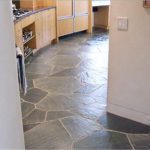Introduction:
Cultured stone is a popular choice among homeowners for adding a touch of elegance and sophistication to their properties. When used around windows, cultured stone can enhance the overall appearance of the home, adding curb appeal and increasing its value. In this article, we will explore the benefits of using cultured stone around windows, the various styles and designs available, and the installation process involved.
Benefits of Using Cultured Stone Around Windows:
1. Aesthetic Appeal: One of the primary reasons homeowners choose to use cultured stone around windows is for its aesthetic appeal. Cultured stone adds a timeless and natural look to the exterior of the home, creating a warm and inviting atmosphere. The texture and color variations of cultured stone can complement the existing design elements of the home, enhancing its overall appearance.
2. Durability: Cultured stone is known for its durability and longevity. Unlike natural stone, which can be prone to cracking and fading over time, cultured stone is manufactured to withstand the elements and maintain its appearance for years to come. This makes it an ideal choice for use around windows, where it will be exposed to varying weather conditions.
3. Low Maintenance: Another advantage of using cultured stone around windows is its low maintenance requirements. Cultured stone is easy to clean and does not require sealing or special treatments to maintain its appearance. Regular washing with water and mild detergent is usually sufficient to keep cultured stone looking its best.

4. Versatility: Cultured stone comes in a wide range of styles, colors, and textures, allowing homeowners to choose the perfect option to complement their home's design aesthetic. Whether you prefer a rustic, traditional, or modern look, there is a cultured stone option that will suit your preferences.
Styles and Designs of Cultured Stone:
1. Stacked Stone: Stacked stone is a popular choice for adding texture and depth to the exterior of the home. This style of cultured stone features irregularly shaped stones that are stacked on top of each other, creating a natural and rustic look. Stacked stone around windows can create a focal point and draw attention to the architectural features of the home.
2. River Rock: River rock cultured stone mimics the look of smooth, rounded stones found in riverbeds. This style adds a touch of natural elegance to the home and works well with a variety of architectural styles. River rock cultured stone around windows can create a seamless transition between the interior and exterior spaces of the home.
3. Limestone: Limestone cultured stone offers a classic and timeless look that complements both traditional and modern homes. The soft, neutral colors of limestone can add a touch of sophistication and elegance to the exterior of the home. Limestone cultured stone around windows can create a cohesive and polished appearance.
4. Brick: Brick cultured stone replicates the look of traditional brick masonry, providing a sense of warmth and character to the home. Cobblestone stepstone pavers for rustic charm cultured stone around windows can add a touch of traditional charm and create a welcoming entrance for visitors.
Installation Process:
The installation of cultured stone around windows is a meticulous process that requires skill and attention to detail. Here is an overview of the typical installation process:
1. Preparation: The first step in installing cultured stone around windows is to prepare the surface. This may involve removing existing siding or trim, cleaning the area, and ensuring that the surface is smooth and free of debris.
2. Waterproofing: To protect the home from water damage, a waterproofing membrane is applied to the surface around the windows. This membrane acts as a barrier against moisture and helps to prevent water infiltration.
3. Lath Installation: A metal lath is then installed over the waterproofing membrane to provide a secure base for the cultured stone. The lath is attached to the surface using screws or nails, ensuring that it is properly secured.
4. Mortar Application: A scratch coat of mortar is applied to the lath, creating a rough surface for the cultured stone to adhere to. The mortar is spread evenly and allowed to set before the cultured stone is installed.
5. Cultured Stone Installation: The cultured stone is then applied to the surface using a combination of mortar and grout. Each stone is carefully placed and secured in the desired pattern, creating a seamless and cohesive look around the windows.
6. Finishing Touches: Once the cultured stone is in place, any excess mortar or grout is cleaned off, and the joints are finished to create a polished appearance. The windows are then trimmed with matching or contrasting materials to complete the look.
Conclusion:
Cultured stone around windows is a versatile and stylish option for enhancing the exterior of your home. With its aesthetic appeal, durability, and low maintenance requirements, cultured stone can add value and charm to your property. Whether you prefer a rustic stacked stone look or a classic limestone finish, there is a cultured stone option to suit your design preferences. By following the proper installation process, you can enjoy the beauty and benefits of cultured stone around your windows for years to come.
